文章目录
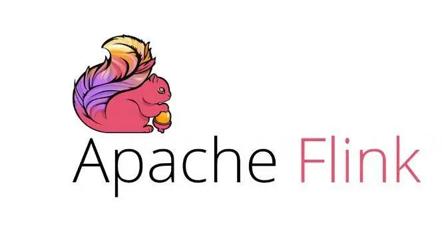
Flink高手之路2-Flink集群的搭建
一、Flink的安装模式
1.本地local模式
本地单机模式,一般用于测试环境是否搭建成功,很少使用
2.独立集群模式standalone
Flink自带集群,开发测试使用
3.高可用的独立集群模式standalone HA
Flink自带集群,用于开发测试
4.基于yarn模式Flink on yarn
计算资源统一交给hadoop的yarn进行管理,用于生产环境
二、基础环境
- 虚拟机
- jdk1.8
- ssh免密登录
三、Flink的local模式安装
1. 下载安装包

点击:

点击下载:
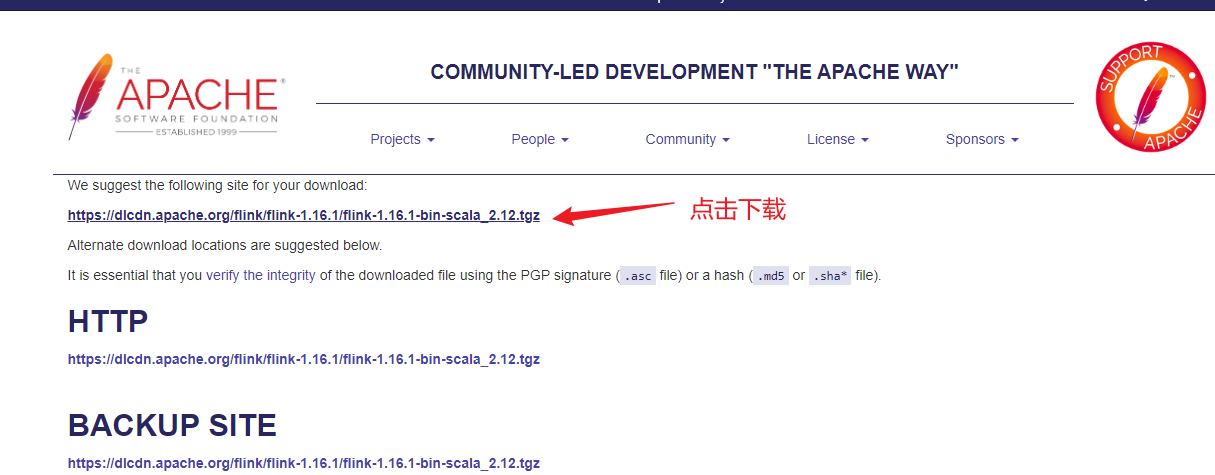
2. 上传服务器
找到安装包,并上传:

上传成功:

3.解压
tar xzvf flink-1.16.1-bin-scala_2.12.tgz -C /export/servers/
- 1
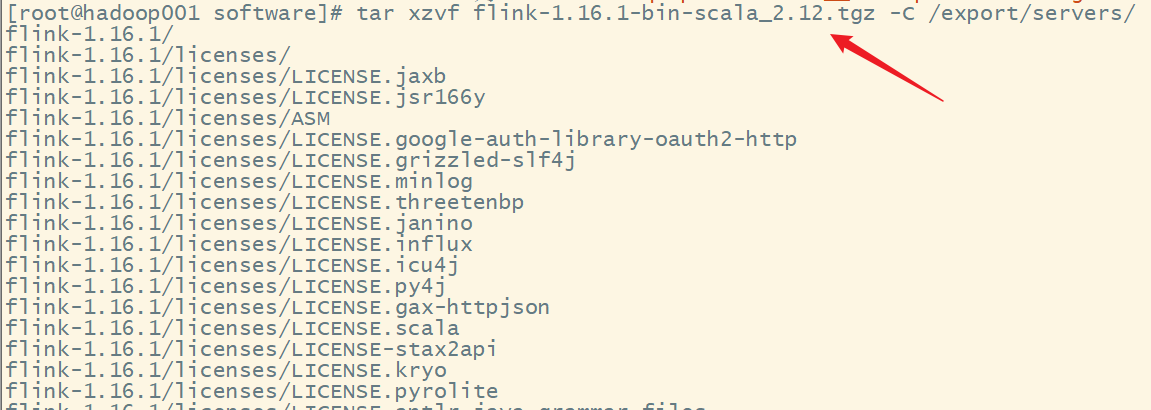
进入 Servers 目录下:

进入 Flink 目录下:

进入 bin 目录下:

4. 配置环境变量

5. 使环境变量起作用

6.测试显示版本

7.测试scala shell交互命令行(可跳过)
需要flink的版本是1.12及以下的版本,在高版本中 scala shell 被舍去了。
1)安装一下 Flink 1.12 版本
上传文件

上传成功:

解压


2)启动命令行
启动 shell
bin/start-scala-shell.sh local
- 1


3)web ui查看

4)scala命令行示例-单词计数(批处理)
- 准备好数据文件

benv.readTextFile("/root/a.txt").flatMap(_.split(" ")).map((_,1)).groupBy(0).sum(1).print()
- 1

5)scala命令行示例2-窗口计数(流处理)

6)退出命令行
输入 :quit 或者 Ctrl + d

8.local模式测试
启动集群并查看进程

9.查看Flink的web ui
启动失败,需要修改/etc/hosts文件,添加localhost的定义

若直接添加
192.168.92.128 localhost在启动 Hbase时会出现如下错误
修改完成后,启动成功:

10.local集群运行测试任务-单词计数
1)先准备好数据文件

2)找到单词计数的jar包

3)提交任务到集群上运行
出现错误:org.apache.flink.client.program.ProgramInvocationException: The main method caused an error: java.util.concurrent.ExecutionException: org.apache.flink.runtime.client.JobSubmissionException: Failed to submit JobGraph.
原因:没有启动Flink集群
启动集群:
运行成功:

执行成功后,在/root目录下出现 output 目录

运行结果

4)web ui任务执行过程查看

点击任务

11.Flink本地(local)模式任务执行的原理
Flink程序提交任务到 JobClient ,JobClient 提交任务到 JobManager【Master】,JobManager 分发任务给TaskManager,TaskManager执行任务,执行任务后发送状态给 JobManager,JobManager 将结果返回到 JobClient 。
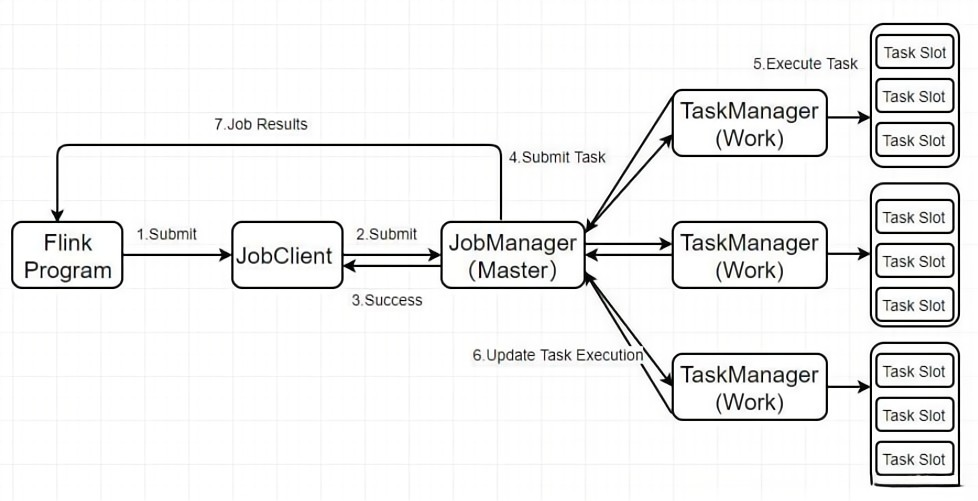
四、Flink的独立集群Standalone模式的安装及测试
1.集群规划
| 服务器 | JobManager | TaskManager |
|---|---|---|
| hadoop001 | ✅ | ✅ |
| hadoop002 | ❎ | ✅ |
| hadoop003 | ❎ | ✅ |
2.下载安装包并上传服务器解压
同上
3.配置环境变量并使环境变量起作用
同上
4.修改Flink的配置文件

1)修改yaml或者yml文件的注意事项
- 不同的等级用冒号隔开,同时缩进格式
- 次等级的前面是空格,不能使用制表符
- 冒号之后如果有值,那么冒号与值之间用至少一个空格分隔,不能紧贴在一起

2)修改flink-conf.yaml
- flink1.16版本的配置
################################################################################
# Licensed to the Apache Software Foundation (ASF) under one
# or more contributor license agreements. See the NOTICE file
# distributed with this work for additional information
# regarding copyright ownership. The ASF licenses this file
# to you under the Apache License, Version 2.0 (the
# "License"); you may not use this file except in compliance
# with the License. You may obtain a copy of the License at
#
# http://www.apache.org/licenses/LICENSE-2.0
#
# Unless required by applicable law or agreed to in writing, software
# distributed under the License is distributed on an "AS IS" BASIS,
# WITHOUT WARRANTIES OR CONDITIONS OF ANY KIND, either express or implied.
# See the License for the specific language governing permissions and
# limitations under the License.
################################################################################
#==============================================================================
# Common
#==============================================================================
# The external address of the host on which the JobManager runs and can be
# reached by the TaskManagers and any clients which want to connect. This setting
# is only used in Standalone mode and may be overwritten on the JobManager side
# by specifying the --host parameter of the bin/jobmanager.sh executable.
# In high availability mode, if you use the bin/start-cluster.sh script and setup
# the conf/masters file, this will be taken care of automatically. Yarn
# automatically configure the host name based on the hostname of the node where the
# JobManager runs.
jobmanager.rpc.address: hadoop001
# The RPC port where the JobManager is reachable.
jobmanager.rpc.port: 6123
# The host interface the JobManager will bind to. By default, this is localhost, and will prevent
# the JobManager from communicating outside the machine/container it is running on.
# On YARN this setting will be ignored if it is set to 'localhost', defaulting to 0.0.0.0.
# On Kubernetes this setting will be ignored, defaulting to 0.0.0.0.
#
# To enable this, set the bind-host address to one that has access to an outside facing network
# interface, such as 0.0.0.0.
jobmanager.bind-host: 0.0.0.0
# The total process memory size for the JobManager.
#
# Note this accounts for all memory usage within the JobManager process, including JVM metaspace and other overhead.
jobmanager.memory.process.size: 1600m
# The host interface the TaskManager will bind to. By default, this is localhost, and will prevent
# the TaskManager from communicating outside the machine/container it is running on.
# On YARN this setting will be ignored if it is set to 'localhost', defaulting to 0.0.0.0.
# On Kubernetes this setting will be ignored, defaulting to 0.0.0.0.
#
# To enable this, set the bind-host address to one that has access to an outside facing network
# interface, such as 0.0.0.0.
taskmanager.bind-host: 0.0.0.0
# The address of the host on which the TaskManager runs and can be reached by the JobManager and
# other TaskManagers. If not specified, the TaskManager will try different strategies to identify
# the address.
#
# Note this address needs to be reachable by the JobManager and forward traffic to one of
# the interfaces the TaskManager is bound to (see 'taskmanager.bind-host').
#
# Note also that unless all TaskManagers are running on the same machine, this address needs to be
# configured separately for each TaskManager.
taskmanager.host: hadoop001
# The total process memory size for the TaskManager.
#
# Note this accounts for all memory usage within the TaskManager process, including JVM metaspace and other overhead.
taskmanager.memory.process.size: 1728m
# To exclude JVM metaspace and overhead, please, use total Flink memory size instead of 'taskmanager.memory.process.size'.
# It is not recommended to set both 'taskmanager.memory.process.size' and Flink memory.
#
# taskmanager.memory.flink.size: 1280m
# The number of task slots that each TaskManager offers. Each slot runs one parallel pipeline.
taskmanager.numberOfTaskSlots: 2
# The parallelism used for programs that did not specify and other parallelism.
parallelism.default: 2
# The default file system scheme and authority.
#
# By default file paths without scheme are interpreted relative to the local
# root file system 'file:///'. Use this to override the default and interpret
# relative paths relative to a different file system,
# for example 'hdfs://mynamenode:12345'
#
# fs.default-scheme
#==============================================================================
# High Availability
#==============================================================================
# The high-availability mode. Possible options are 'NONE' or 'zookeeper'.
#
# high-availability: zookeeper
# The path where metadata for master recovery is persisted. While ZooKeeper stores
# the small ground truth for checkpoint and leader election, this location stores
# the larger objects, like persisted dataflow graphs.
#
# Must be a durable file system that is accessible from all nodes
# (like HDFS, S3, Ceph, nfs, ...)
#
# high-availability.storageDir: hdfs:///flink/ha/
# The list of ZooKeeper quorum peers that coordinate the high-availability
# setup. This must be a list of the form:
# "host1:clientPort,host2:clientPort,..." (default clientPort: 2181)
#
# high-availability.zookeeper.quorum: localhost:2181
# ACL options are based on https://zookeeper.apache.org/doc/r3.1.2/zookeeperProgrammers.html#sc_BuiltinACLSchemes
# It can be either "creator" (ZOO_CREATE_ALL_ACL) or "open" (ZOO_OPEN_ACL_UNSAFE)
# The default value is "open" and it can be changed to "creator" if ZK security is enabled
#
# high-availability.zookeeper.client.acl: open
#==============================================================================
# Fault tolerance and checkpointing
#==============================================================================
# The backend that will be used to store operator state checkpoints if
# checkpointing is enabled. Checkpointing is enabled when execution.checkpointing.interval > 0.
#
# Execution checkpointing related parameters. Please refer to CheckpointConfig and ExecutionCheckpointingOptions for more details.
#
# execution.checkpointing.interval: 3min
# execution.checkpointing.externalized-checkpoint-retention: [DELETE_ON_CANCELLATION, RETAIN_ON_CANCELLATION]
# execution.checkpointing.max-concurrent-checkpoints: 1
# execution.checkpointing.min-pause: 0
# execution.checkpointing.mode: [EXACTLY_ONCE, AT_LEAST_ONCE]
# execution.checkpointing.timeout: 10min
# execution.checkpointing.tolerable-failed-checkpoints: 0
# execution.checkpointing.unaligned: false
#
# Supported backends are 'hashmap', 'rocksdb', or the
# .
#
# state.backend: hashmap
# Directory for checkpoints filesystem, when using any of the default bundled
# state backends.
#
# state.checkpoints.dir: hdfs://namenode-host:port/flink-checkpoints
# Default target directory for savepoints, optional.
#
# state.savepoints.dir: hdfs://namenode-host:port/flink-savepoints
# Flag to enable/disable incremental checkpoints for backends that
# support incremental checkpoints (like the RocksDB state backend).
#
# state.backend.incremental: false
# The failover strategy, i.e., how the job computation recovers from task failures.
# Only restart tasks that may have been affected by the task failure, which typically includes
# downstream tasks and potentially upstream tasks if their produced data is no longer available for consumption.
jobmanager.execution.failover-strategy: region
#==============================================================================
# Rest & web frontend
#==============================================================================
# The port to which the REST client connects to. If rest.bind-port has
# not been specified, then the server will bind to this port as well.
#
rest.port: 8081
# The address to which the REST client will connect to
#
rest.address: hadoop001
# Port range for the REST and web server to bind to.
#
#rest.bind-port: 8080-8090
# The address that the REST & web server binds to
# By default, this is localhost, which prevents the REST & web server from
# being able to communicate outside of the machine/container it is running on.
#
# To enable this, set the bind address to one that has access to outside-facing
# network interface, such as 0.0.0.0.
#
rest.bind-address: 0.0.0.0
# Flag to specify whether job submission is enabled from the web-based
# runtime monitor. Uncomment to disable.
#web.submit.enable: false
# Flag to specify whether job cancellation is enabled from the web-based
# runtime monitor. Uncomment to disable.
#web.cancel.enable: false
#==============================================================================
# Advanced
#==============================================================================
# Override the directories for temporary files. If not specified, the
# system-specific Java temporary directory (java.io.tmpdir property) is taken.
#
# For framework setups on Yarn, Flink will automatically pick up the
# containers' temp directories without any need for configuration.
#
# Add a delimited list for multiple directories, using the system directory
# delimiter (colon ':' on unix) or a comma, e.g.:
# /data1/tmp:/data2/tmp:/data3/tmp
#
# Note: Each directory entry is read from and written to by a different I/O
# thread. You can include the same directory multiple times in order to create
# multiple I/O threads against that directory. This is for example relevant for
# high-throughput RAIDs.
#
# io.tmp.dirs: /tmp
# The classloading resolve order. Possible values are 'child-first' (Flink's default)
# and 'parent-first' (Java's default).
#
# Child first classloading allows users to use different dependency/library
# versions in their application than those in the classpath. Switching back
# to 'parent-first' may help with debugging dependency issues.
#
# classloader.resolve-order: child-first
# The amount of memory going to the network stack. These numbers usually need
# no tuning. Adjusting them may be necessary in case of an "Insufficient number
# of network buffers" error. The default min is 64MB, the default max is 1GB.
#
# taskmanager.memory.network.fraction: 0.1
# taskmanager.memory.network.min: 64mb
# taskmanager.memory.network.max: 1gb
#==============================================================================
# Flink Cluster Security Configuration
#==============================================================================
# Kerberos authentication for various components - Hadoop, ZooKeeper, and connectors -
# may be enabled in four steps:
# 1. configure the local krb5.conf file
# 2. provide Kerberos credentials (either a keytab or a ticket cache w/ kinit)
# 3. make the credentials available to various JAAS login contexts
# 4. configure the connector to use JAAS/SASL
# The below configure how Kerberos credentials are provided. A keytab will be used instead of
# a ticket cache if the keytab path and principal are set.
# security.kerberos.login.use-ticket-cache: true
# security.kerberos.login.keytab: /path/to/kerberos/keytab
# security.kerberos.login.principal: flink-user
# The configuration below defines which JAAS login contexts
# security.kerberos.login.contexts: Client,KafkaClient
#==============================================================================
# ZK Security Configuration
#==============================================================================
# Below configurations are applicable if ZK ensemble is configured for security
# Override below configuration to provide custom ZK service name if configured
# zookeeper.sasl.service-name: zookeeper
# The configuration below must match one of the values set in "security.kerberos.login.contexts"
# zookeeper.sasl.login-context-name: Client
#==============================================================================
# HistoryServer
#==============================================================================
# The HistoryServer is started and stopped via bin/historyserver.sh (start|stop)
# Directory to upload completed jobs to. Add this directory to the list of
# monitored directories of the HistoryServer as well (see below).
#jobmanager.archive.fs.dir: hdfs:///completed-jobs/
# The address under which the web-based HistoryServer listens.
#historyserver.web.address: 0.0.0.0
# The port under which the web-based HistoryServer listens.
#historyserver.web.port: 8082
# Comma separated list of directories to monitor for completed jobs.
#historyserver.archive.fs.dir: hdfs:///completed-jobs/
# Interval in milliseconds for refreshing the monitored directories.
#historyserver.archive.fs.refresh-interval: 10000
- 1
- 2
- 3
- 4
- 5
- 6
- 7
- 8
- 9
- 10
- 11
- 12
- 13
- 14
- 15
- 16
- 17
- 18
- 19
- 20
- 21
- 22
- 23
- 24
- 25
- 26
- 27
- 28
- 29
- 30
- 31
- 32
- 33
- 34
- 35
- 36
- 37
- 38
- 39
- 40
- 41
- 42
- 43
- 44
- 45
- 46
- 47
- 48
- 49
- 50
- 51
- 52
- 53
- 54
- 55
- 56
- 57
- 58
- 59
- 60
- 61
- 62
- 63
- 64
- 65
- 66
- 67
- 68
- 69
- 70
- 71
- 72
- 73
- 74
- 75
- 76
- 77
- 78
- 79
- 80
- 81
- 82
- 83
- 84
- 85
- 86
- 87
- 88
- 89
- 90
- 91
- 92
- 93
- 94
- 95
- 96
- 97
- 98
- 99
- 100
- 101
- 102
- 103
- 104
- 105
- 106
- 107
- 108
- 109
- 110
- 111
- 112
- 113
- 114
- 115
- 116
- 117
- 118
- 119
- 120
- 121
- 122
- 123
- 124
- 125
- 126
- 127
- 128
- 129
- 130
- 131
- 132
- 133
- 134
- 135
- 136
- 137
- 138
- 139
- 140
- 141
- 142
- 143
- 144
- 145
- 146
- 147
- 148
- 149
- 150
- 151
- 152
- 153
- 154
- 155
- 156
- 157
- 158
- 159
- 160
- 161
- 162
- 163
- 164
- 165
- 166
- 167
- 168
- 169
- 170
- 171
- 172
- 173
- 174
- 175
- 176
- 177
- 178
- 179
- 180
- 181
- 182
- 183
- 184
- 185
- 186
- 187
- 188
- 189
- 190
- 191
- 192
- 193
- 194
- 195
- 196
- 197
- 198
- 199
- 200
- 201
- 202
- 203
- 204
- 205
- 206
- 207
- 208
- 209
- 210
- 211
- 212
- 213
- 214
- 215
- 216
- 217
- 218
- 219
- 220
- 221
- 222
- 223
- 224
- 225
- 226
- 227
- 228
- 229
- 230
- 231
- 232
- 233
- 234
- 235
- 236
- 237
- 238
- 239
- 240
- 241
- 242
- 243
- 244
- 245
- 246
- 247
- 248
- 249
- 250
- 251
- 252
- 253
- 254
- 255
- 256
- 257
- 258
- 259
- 260
- 261
- 262
- 263
- 264
- 265
- 266
- 267
- 268
- 269
- 270
- 271
- 272
- 273
- 274
- 275
- 276
- 277
- 278
- 279
- 280
- 281
- 282
- 283
- 284
- 285
- 286
- 287
- 288
- 289
- 290
- 291
- 292
- 293
- 294
- 295
- 296
- 297
- 298
- 299
- 300
- 301
- 302
- 303
- 304
- 305
- 306
- 307
- 308
- 309
- Flink1.12版本的配置

3)master

4)workers

5.分发文件
1)分发flink


2)分发/etc/profile

3)使得配置文件起作用

6.启动Flink集群,并查看相关进程



7.web ui查看

8.集群测试
1)提交单词计数的任务,使用默认的参数
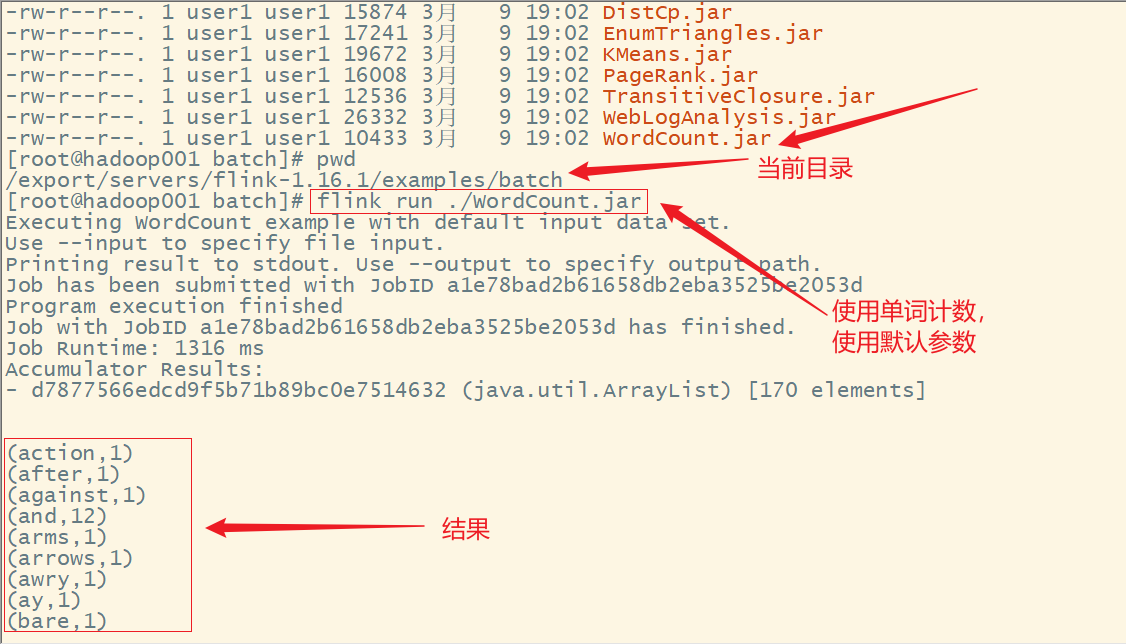


2)提交单词计数的任务,使用自定义参数
准备好数据文件

上传hdfs
首先要确保 hdfs 集群已经启动

发现我们以前已经上传过了

提交命令
flink run ./WordCount.jar --input hdfs://hadoop001:9000/input --output hdfs://hadoop001:9000/output
- 1

出现错误:
org.apache.flink.core.fs.UnsupportedFileSystemSchemeException: Hadoop is not in the classpath/dependencies.
- 1
这个错误需要把flink-1.16.1与hadoop3进行集成。

3)添加hadoop classpath配置
export HADOOP_CLASSPATH=`hadoop classpath`
- 1

4)分发并激活环境变量


5)下载flink和hadoop的连接工具,上传到flink的lib文件夹
去maven中央仓库下载如下jar包并上传到 flink/lib文件夹中
https://mvnrepository.com/artifact/commons-cli/commons-cli/1.5.0
https://mvnrepository.com/artifact/org.apache.flink/flink-shaded-hadoop-3-uber
这是为了集成hadoop,而shaded依赖已经解决了相关的jar包冲突等问题,该jar包属于第三方jar包,官网有链接,但是并没有hadoop 3.X的,这个直接在maven中央仓库搜索倒是可以搜得到。

上传 jar 包到lib目录下

分发 lib 目录到hadoop002和hadoop003

6)重新启动flink集群

7)重新提交单词计数的任务,使用自定义参数

查看 flink web ui
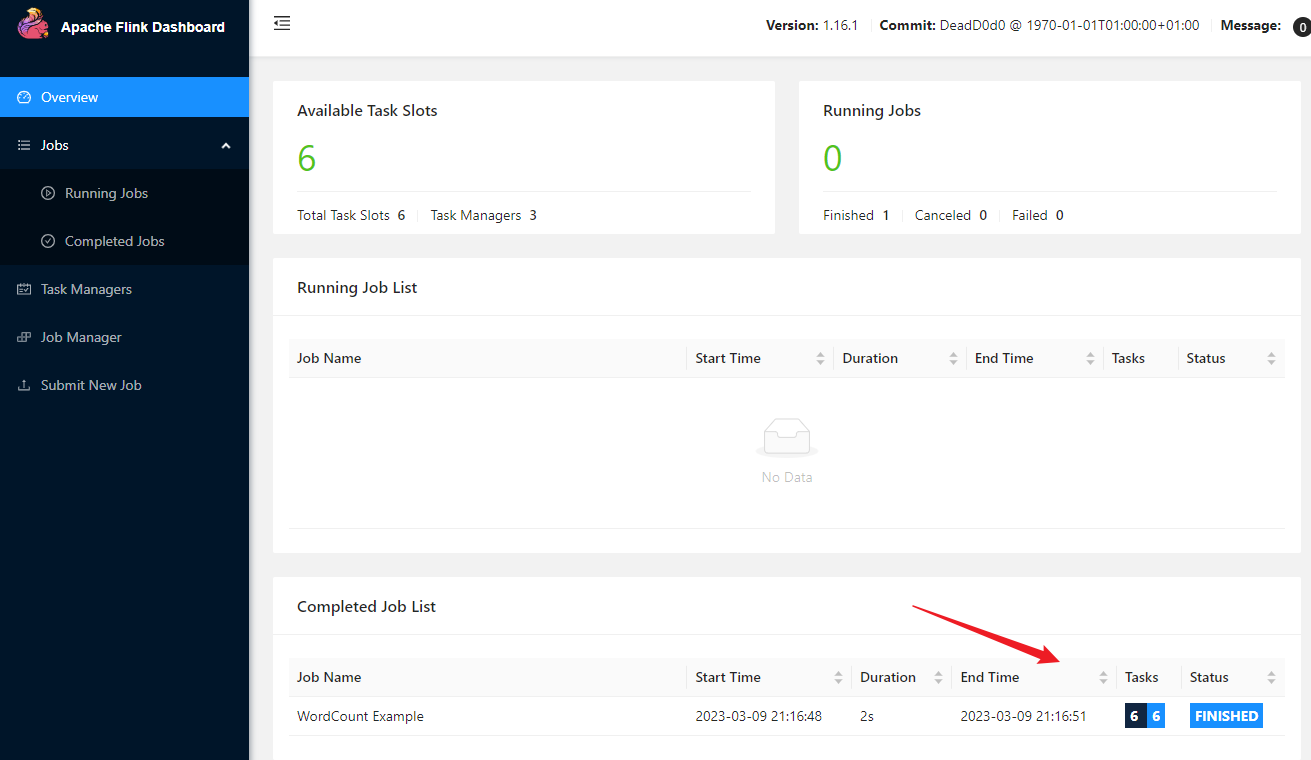
查看 hdfs web UI

点击一个文件查看

9.工作原理

五、独立集群高可用Standalone-HA搭建
1.集群规划
| 服务器 | JobManager | TaskManager |
|---|---|---|
| hadoop001 | y | y |
| hadoop002 | y | y |
| hadoop003 | n | y |
2.修改flink的配置文件
1)修改flink-conf.yaml文件


2)修改masters文件

3)不用修改workers文件
3.同步配置文件
分发到Hadoop002:

分发到Hadoop003:

4.修改hadoop002上的flink-conf.yaml文件


注意:12.7版本下只需要修改一处就可以了,16.1需要修改3处,否则会提交任务失败。
5.启动集群
1)启动zookeeper
启动ZooKeeper,查看ZooKeeper的状态:



2)启动hdfs
3)启动yarn

4)启动flink集群



6.flink的web ui查看


7.集群的测试
1)单词计数使用默认的参数

2)杀掉hadoop001的master进程

此时查看web ui,hadoop001无法访问,hadoop002还可以继续访问

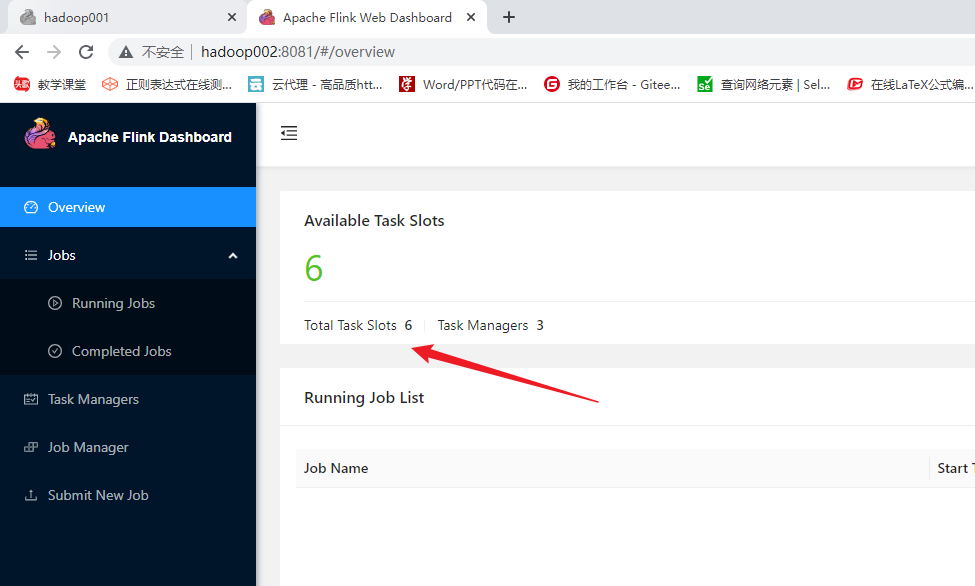
3)再次提交单词计数的任务(使用默认参数)

集群能正常工作,说明高可用在起作用
4)接着杀掉hadoop002的master

此时,node2的web ui也无法访问

再次提交任务,出现错误,无法运行任务
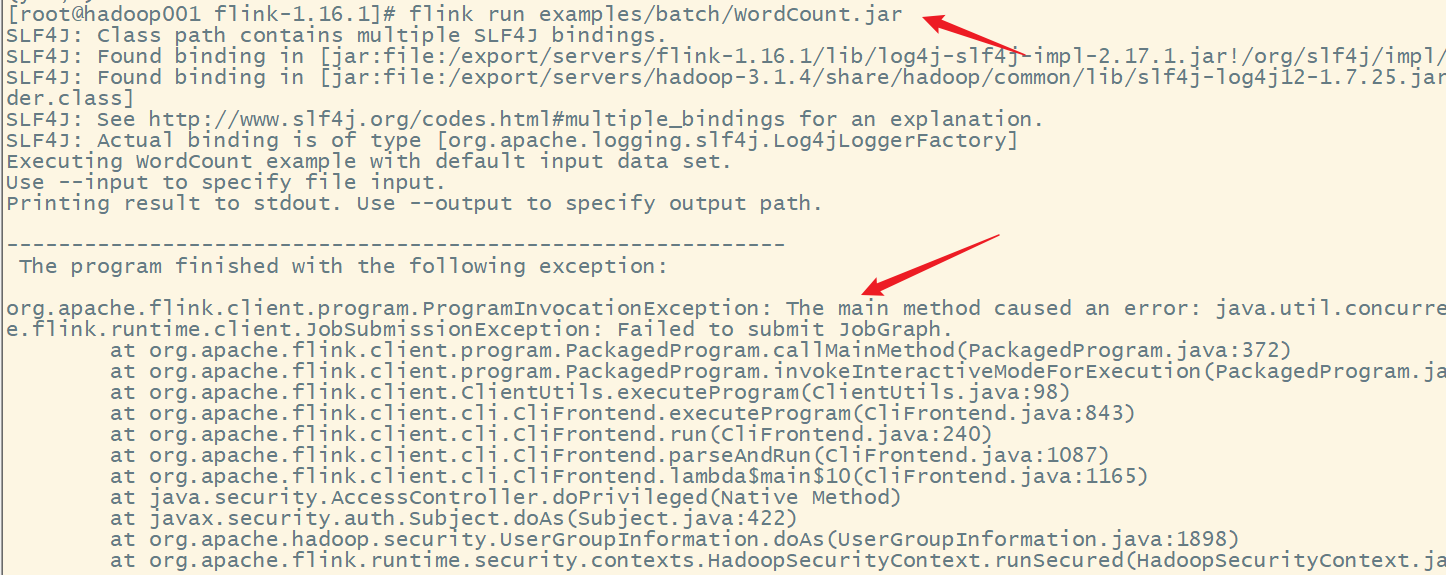
5)单词计数,使用自定义参数
重启集群

删除hdfs上以前创建的output文件夹

提交任务,使用之前上传的数据
flink run examples/batch/WordCount.jar --input hdfs://hadoop001:9000/input --output hdfs://hadoop001:9000/output
- 1

查看结果

杀掉hadoop001的master进程,并再次提交任务


再次删除hdfs上之前创建的output文件夹

再次提交任务,可以正常运行并查看结果,说明高可用搭建成功


8.工作原理

六、Flink on Yarn模式集群搭建及测试
1.为什么要使用Flink on Yarn
- yarn管理资源,可以按需使用,提高整个集群的资源利用率
- 任务有优先级,可以根据优先级合理的安排任务运行作用
- 基于yarn的调度系统,能够自动化的处理各个角色的容错
2.集群规划
跟standalone保持一致
| 服务器 | JobManager | TaskManager |
|---|---|---|
| hadoop001 | y | y |
| hadoop002 | y | y |
| hadoop003 | n | y |
3.修改yarn的配置

4.启动相关的服务
- zookeeper
- hdfs
- yarn
- flink
- historyserver(可选)

启动历史服务器

5.flink on yarn提交任务的模式
有两种模式
- session模式 :会话模式
- per-job模式:每任务模式
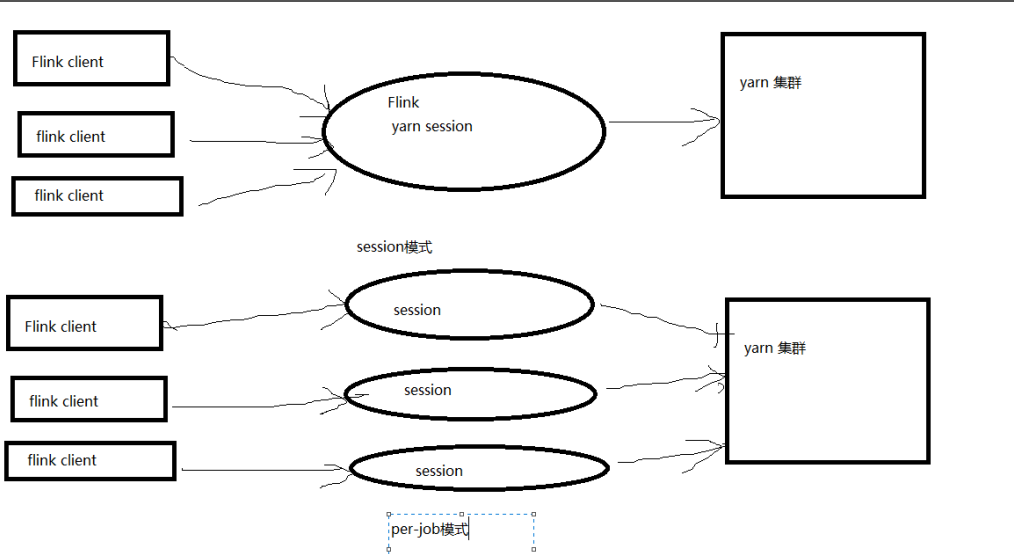
6.Session模式提交任务
1)开启会话(session)

语法:
yarn-session.sh -n 2 -tm 800 -s 1 -d
- 1
说明:
- n:表示申请容器的数量,也就是worker的数量,也就是cpu的核心数
- tm:表示给个worker(TaskManager)的内存大小
- s:表示每个worker的slot的数量
- d:表示后台运行
启动一个会话
yarn-session.sh -n 2 -tm 800 -s 1 -d
- 1

此时的进程
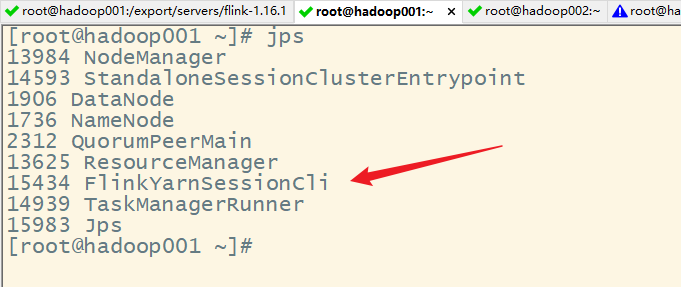
web ui的查看

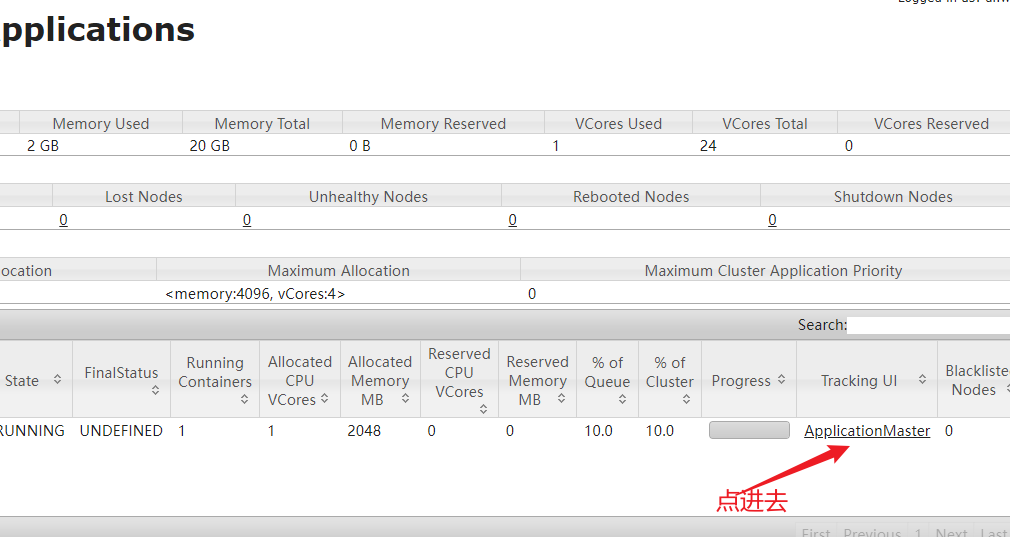



2)提交任务-单词计数
使用的默认的参数,提交任务

查看yarn的web ui



3)再次提交任务

再次查看yarn的web ui

7.关闭yarn-session

关闭会话

查看进程

查看yarn的web ui

8.Per-Job模式提交任务
1)语法
flink run -m yarn-cluster -yjm 1024 -ytm 1024 examples/batch/WordCount.jar
- 1
说明:
- m:jobmanager的地址
- yjm:jobmanager的内存大小
- ytm:taskmanager的内存大小
2)提交任务

3)查看yarn的web ui

执行过程中出现错误

解决错误,可以修改flink的配置

分发配置文件,并重启flink
4)再次提交任务


5)查看jps,并没有相关的进程,也就是当任务执行完成后,进程自动关闭

9.flink任务提交参数总结


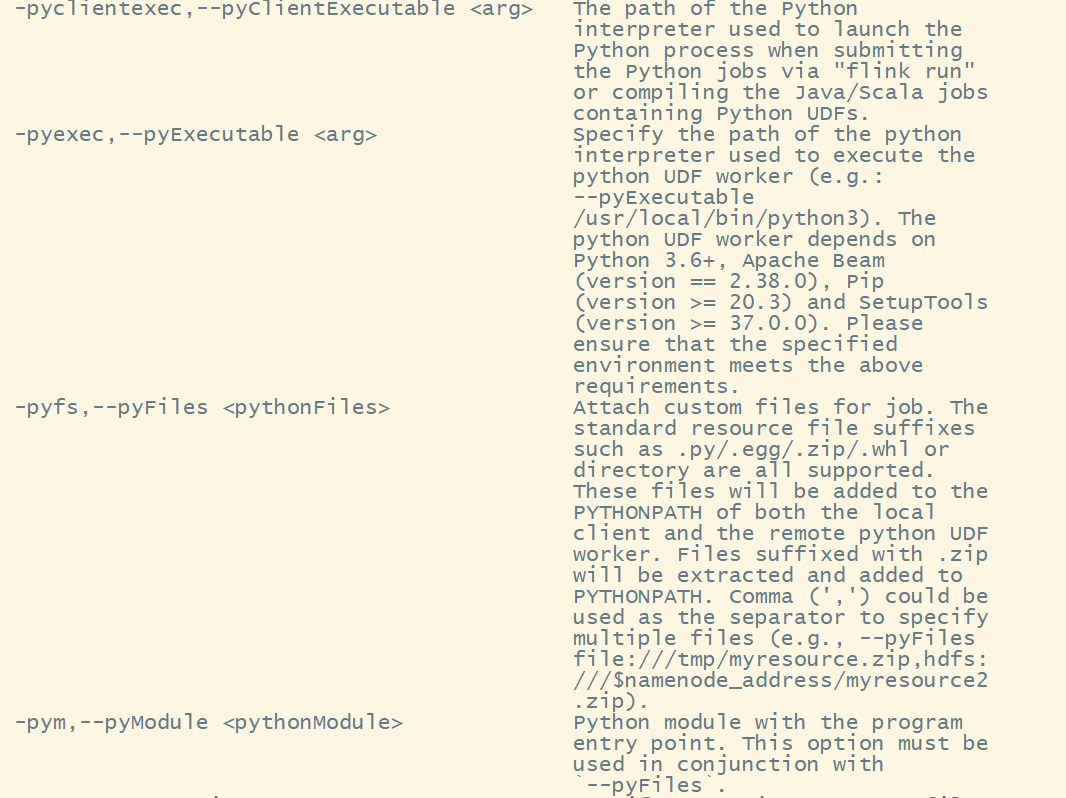

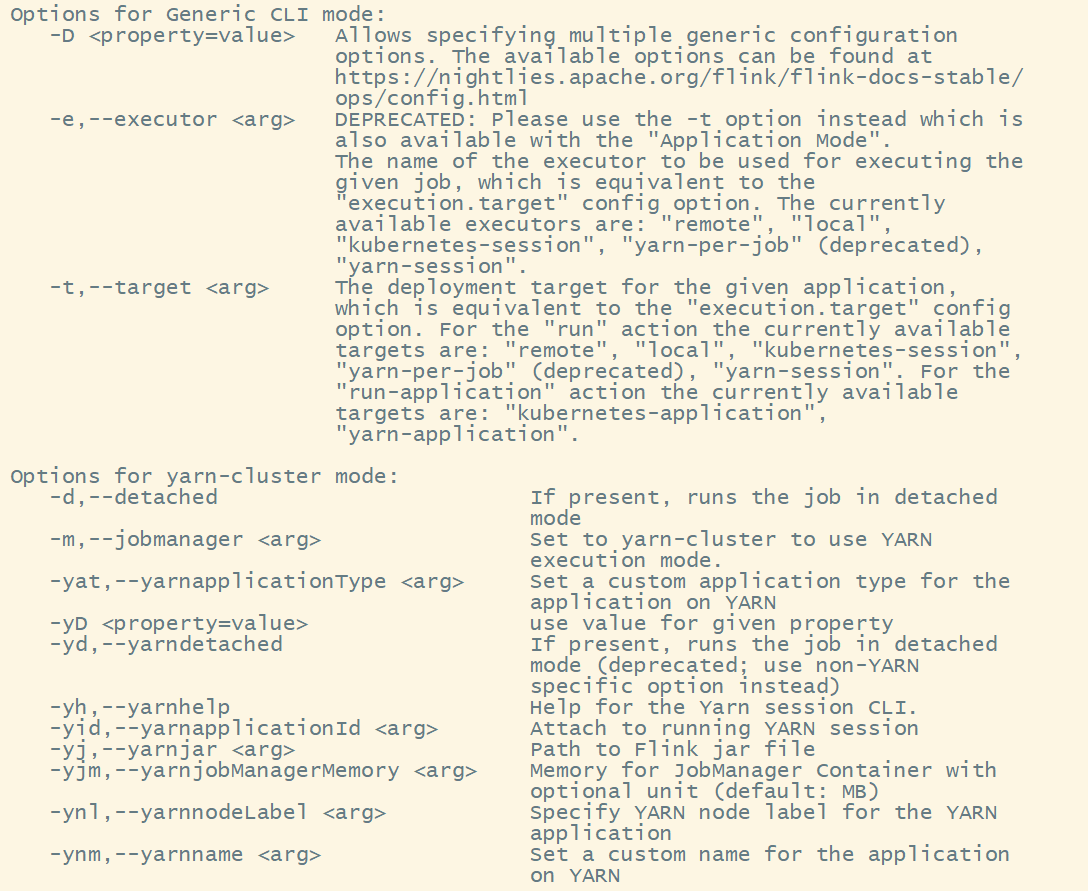

参考文章:




评论记录:
回复评论: